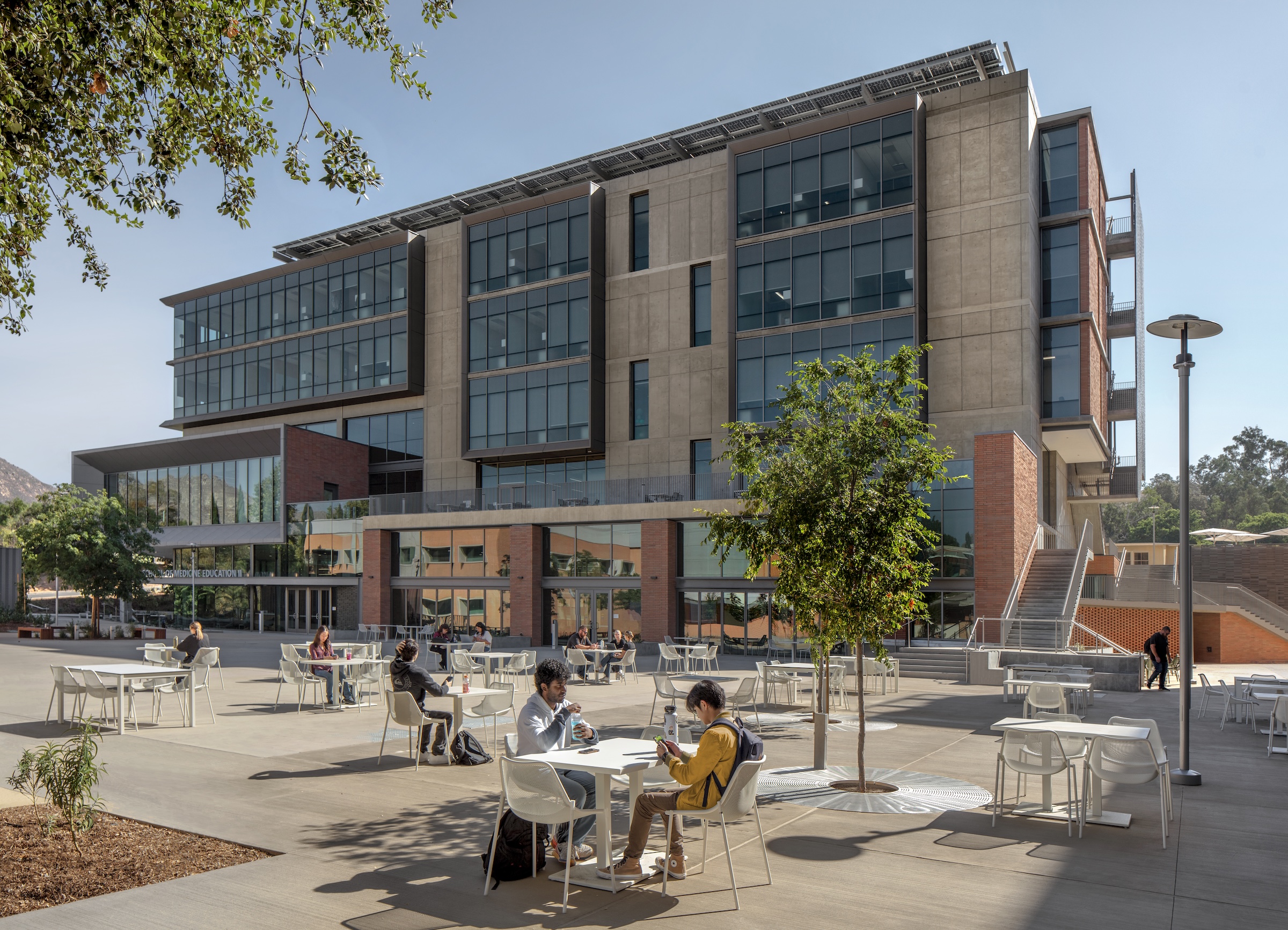The University of California, Riverside, School of Medicine has opened the 94,576-sf, five-floor Education Building II (EDII). Created by the design-build team of CO Architects and Hensel Phelps, the medical school’s new home supports team-based student learning, offers social spaces, and provides departmental offices for faculty and staff.
The learning spaces are located on the first three floors, while the administration and shared functions are housed on the top two floors. The building features interactive classrooms, 15 case-based group seminar rooms, variously sized study rooms, and additional study and amenity spaces.
The building includes materials, such as cast-in-place concrete, brick, terracotta, and glass, that are meant to be both beautiful and durable, lasting for generations.
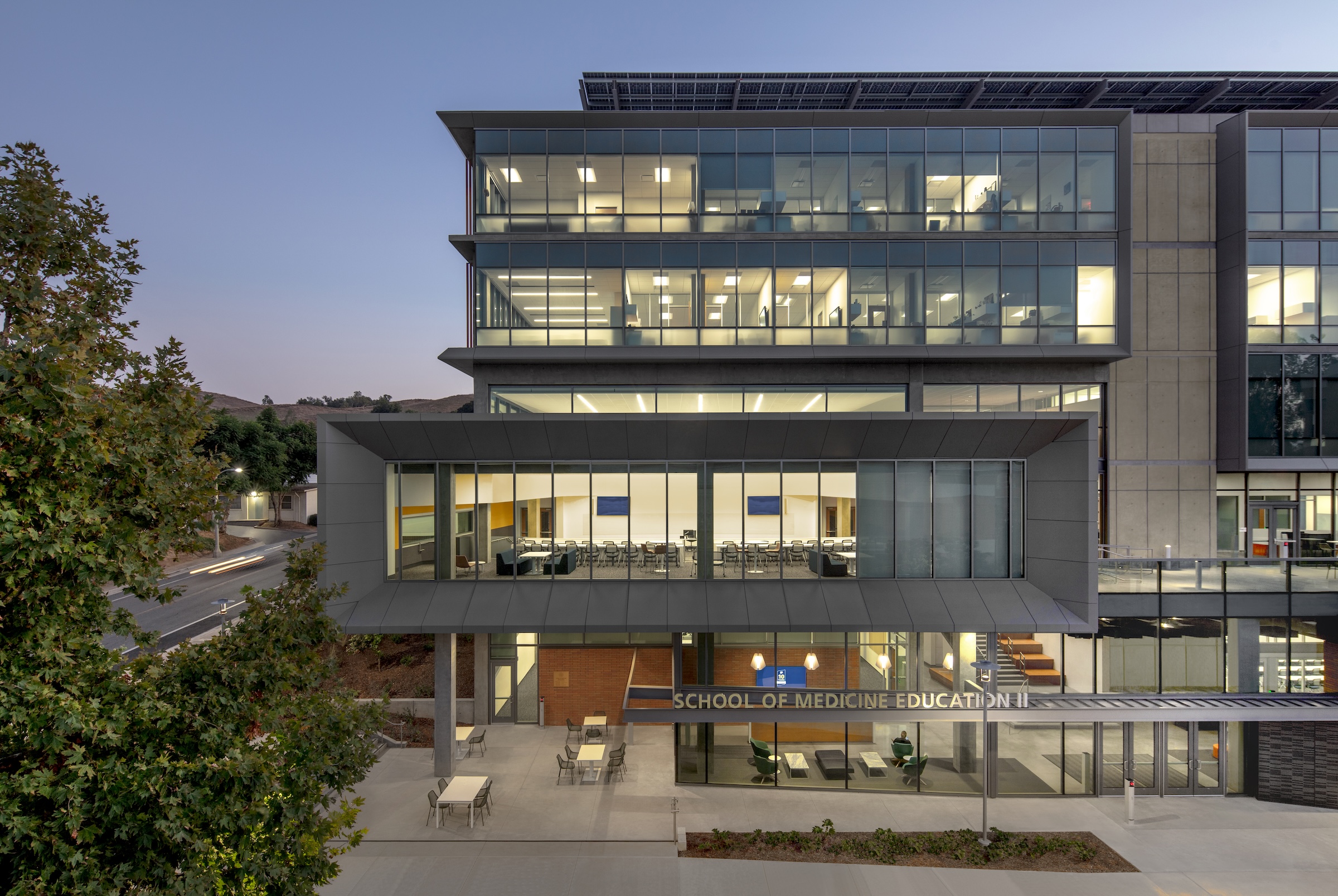
EDII’s design emphasizes transparency to help demystify medical education and welcome prospective students from diverse backgrounds. The use of transparency and shading leverages passive light, prevailing breezes, and solar heat gain. A rooftop solar array contributes to the building’s energy efficiency.
Each façade is optimized for the climate and for varying levels of sun exposure throughout the day. On the east façade, vertical glass fiber reinforced concrete (GFRC) fins create extended shadows and protect the interior from the harsh morning light. Painted perforated aluminum panels shade the east and west exit stairs as well as the south façade’s windows. The porous north façade features abundant glass and walls opening to the courtyard.
Located in a drought-prone region, the building restores the site’s natural vegetative conditions. The ground-level plaza connects the surrounding buildings.
Inside, a three-story perforated gypsum mural depicts an abstraction of orange groves, referencing the region’s history.
On the Building Team:
Owner: UCR School of Medicine
Architect/interior designer: CO Architects
Contractor: Hensel Phelps
Landscape architect: Spurlock Landscape Architects
MEP engineer: P2S, Inc.
Structural engineer, waterproofing, LEED consultant: Thornton Tomasetti
Civil engineer: Albert A. Webb Associates
Geotechnical engineer: Langan
Fire protection engineer: Woden Fire
Acoustics consultant: Arpeggio
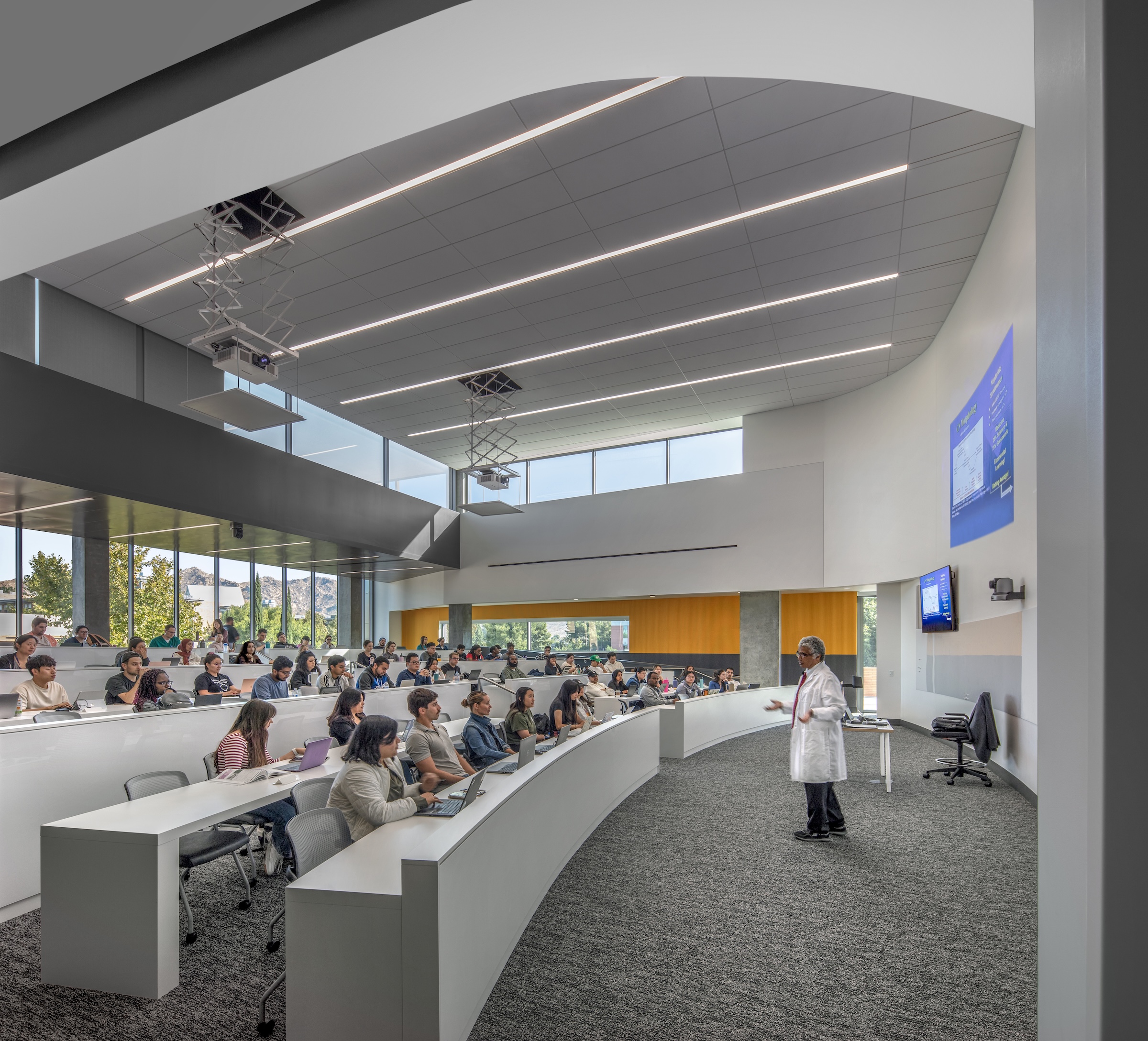
Here is the project essay from the design-build team of Hensel Phelps and CO Architects:
The School of Medicine (SOM) Education Building II (EDII) fulfills the mission of the University of California, Riverside (UCR), to train a diverse workforce of physicians to support the medically underserved Riverside County region of Southern California. The building by the design-build partnership of Hensel Phelps + CO Architects creates a new home for the medical school by incorporating a wide range of team-based student learning, social spaces, and departmental offices for faculty and staff into one 95,476-square-foot, five-story structure. Strategically located and highly visible on campus, the EDII amplifies the SOM’s identity as a forward-thinking medical school and showcases the mission and dedication of medical education to undergraduates and community members alike.
The design team and client shared the vision of crafting a building that supports its occupants and creates an environment to empower students throughout their academic experience and into their careers. The architecture utilizes transparency to demystify medical education, welcoming prospective students from diverse backgrounds to learn about the requirements and daily activities of medical students. EDII’s design is meant to be both beautiful and durable, utilizing materials—such as cast-in-place concrete, brick, terracotta, and glass—that fit within the campus context and will last for generations.
Each façade is optimized for the climate and levels of sun exposure throughout the day. Vertical glass fiber reinforced concrete (GFRC) fins on the east façade cast dramatic extended shadows while protecting interior spaces from the harsh morning light. Painted perforated aluminum panels—featuring custom patterns that resonate with the scale and pattern of the building’s brickwork—shade the east and west exit stairs, screening the stairs behind and creating a larger architectural feature on the façades.
The same panels are used on the south façade to shade individual windows. The staggered window placement is interspersed with brick infill stacked vertically in rows to signify the use of the brick as a façade skin, rather than as load-bearing elements. The north entrance face of the building is porous, both visually with abundant glass and structurally with walls opening out to the courtyard. Inside, a three-story perforated gypsum mural represents an abstraction of orange groves as a nod to the region’s history as the Orange Empire.
The materials palette provides flexibility for expansion over time and allowed construction details to be easily executed and built. During constructability review, the team modeled the different exterior connections and material intersections to digitally ensure the details were constructible and would stand the test of time with limited or no maintenance. Utilizing the design-build delivery method, the EDII was able to fit within a strict budget and a demanding schedule.

The EDII was designed with long-term sustainability in mind to ensure it will remain fully functional for generations to come while minimizing its carbon footprint. Located in a drought-prone region, the building defends and restores the natural vegetative conditions of the site. The EDII’s use of transparency and shading optimizes passive elements of light, prevailing breezes, and solar heat gain. The interiors and exteriors utilize durable, easy-to-maintain, and sustainable building materials, as well as low/no-VOC materials that promote healthy interior air quality and performance. A 200-kilowatt solar array on the roof contributes to its energy efficiency. The EDII will achieve LEED Platinum through its multiplicity of sustainability strategies in all building systems.
To maximize EDII’s lifespan, the design is flexible and adaptable to respond to growth as needs and pedagogy change. The building is organized with all the high-activity and student-centric learning spaces on the first three floors, which are more accessible and feature indoor/outdoor spaces, while administration and shared functions are located on the upper two floors. The EDII collocates most of the medical school’s staff, administrators, and faculty in the same building for the first time, creating greater efficiencies and moments for collaboration.
The medical school’s academic programs are supported by interactive classrooms, 15 case-based group seminar rooms, ample and various sized study rooms, and additional study and amenity spaces that work cohesively to integrate and support student engagement throughout the day and into the night. Throughout the building, the design team identified opportunities to enhance the program with high-profile spaces, such as an interactive tiered classroom that is universally accessible and features an abundance of daylight, state-of-the-art technology, writeup spaces, and informal lounge seating for breakout sessions.
Each level of the EDII capitalizes on the mild Southern California climate by providing outdoor environments that offer views and opportunities for collaboration, socialization, and reflection. An expansive plaza on the ground level connects and organizes the surrounding buildings, creating a new SOM Plaza for a wide variety of School of Medicine and campus events. EDII reinvigorates the area of campus in which it’s sited, creating opportunity for expansion to the south by developing a “Medical Walk”—a pathway that traverses from the health sciences library, across EDI (SOM’s first building), and through EDII, establishing an armature for future expansion.
Located on a constrained site, EDII uses the challenging terrain in innovative ways to create connections both externally to the campus and internally for users. Each grade level provides accessible opportunities to enter the building, maximizing the topographical nature of the site. By embracing the site’s challenges, EDII establishes meaningful and varied campus interfaces along all sides of the building. The design enriches the campus experience and encourages engagement with the larger campus and community of Riverside.
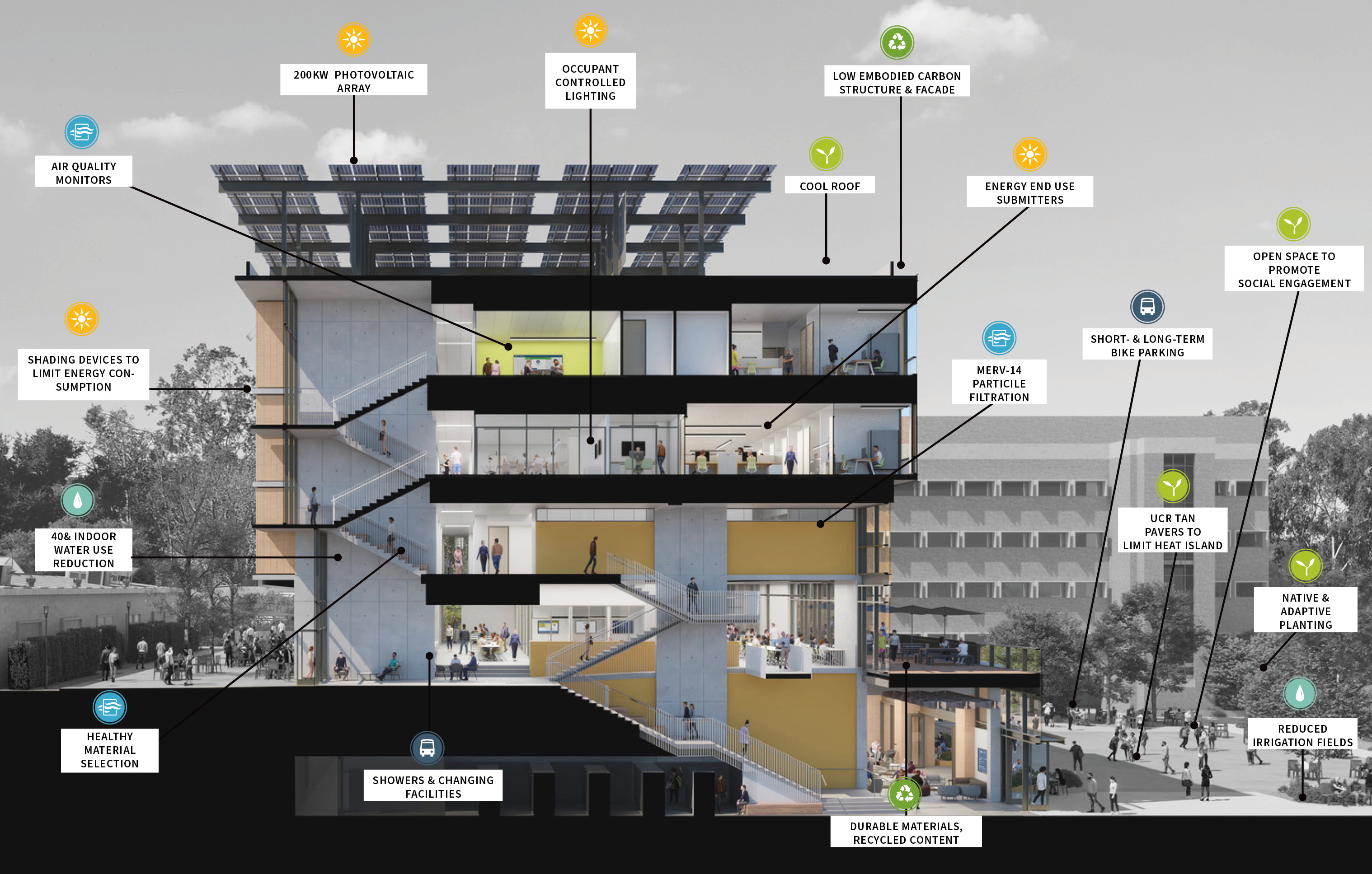
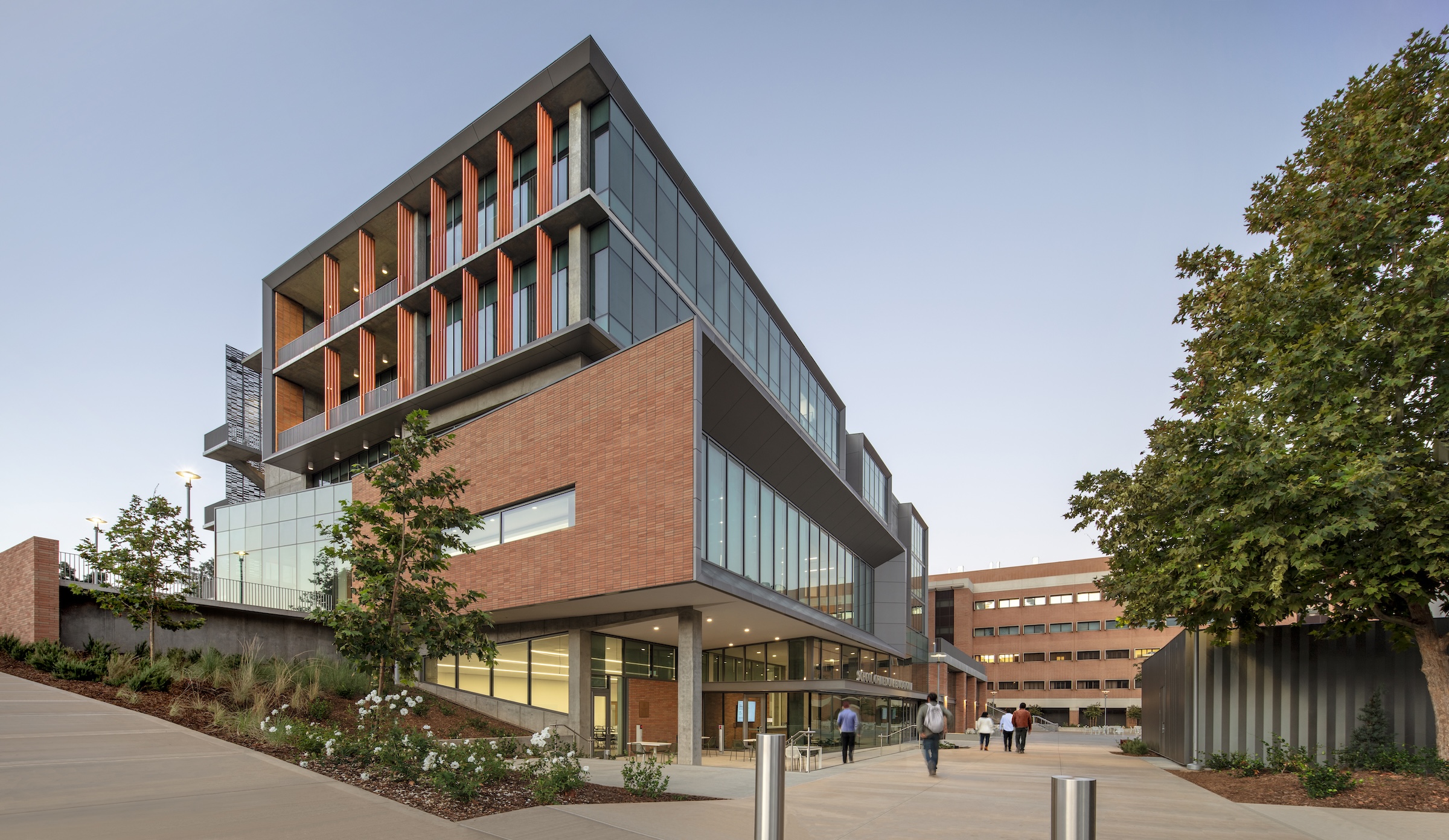
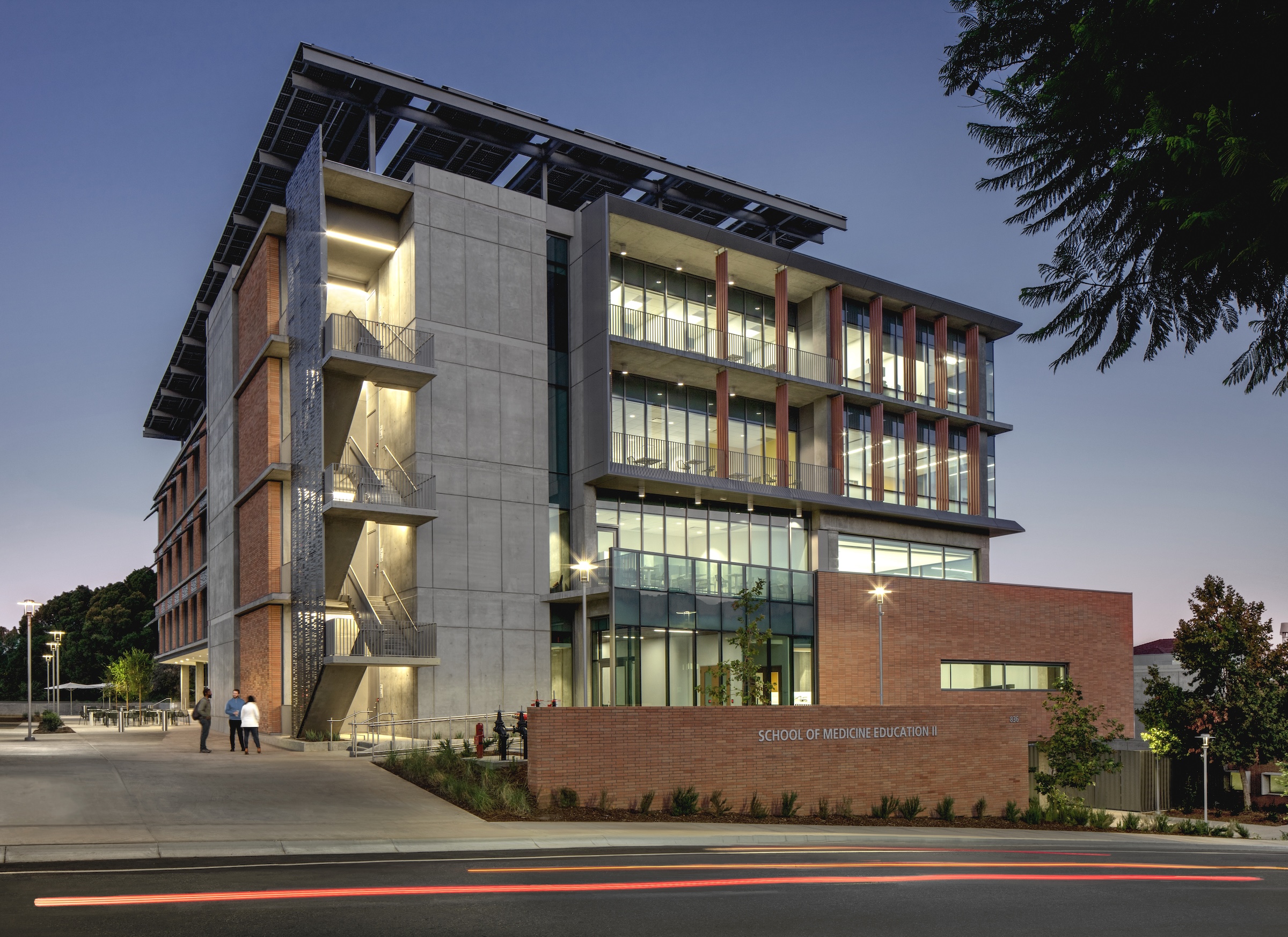
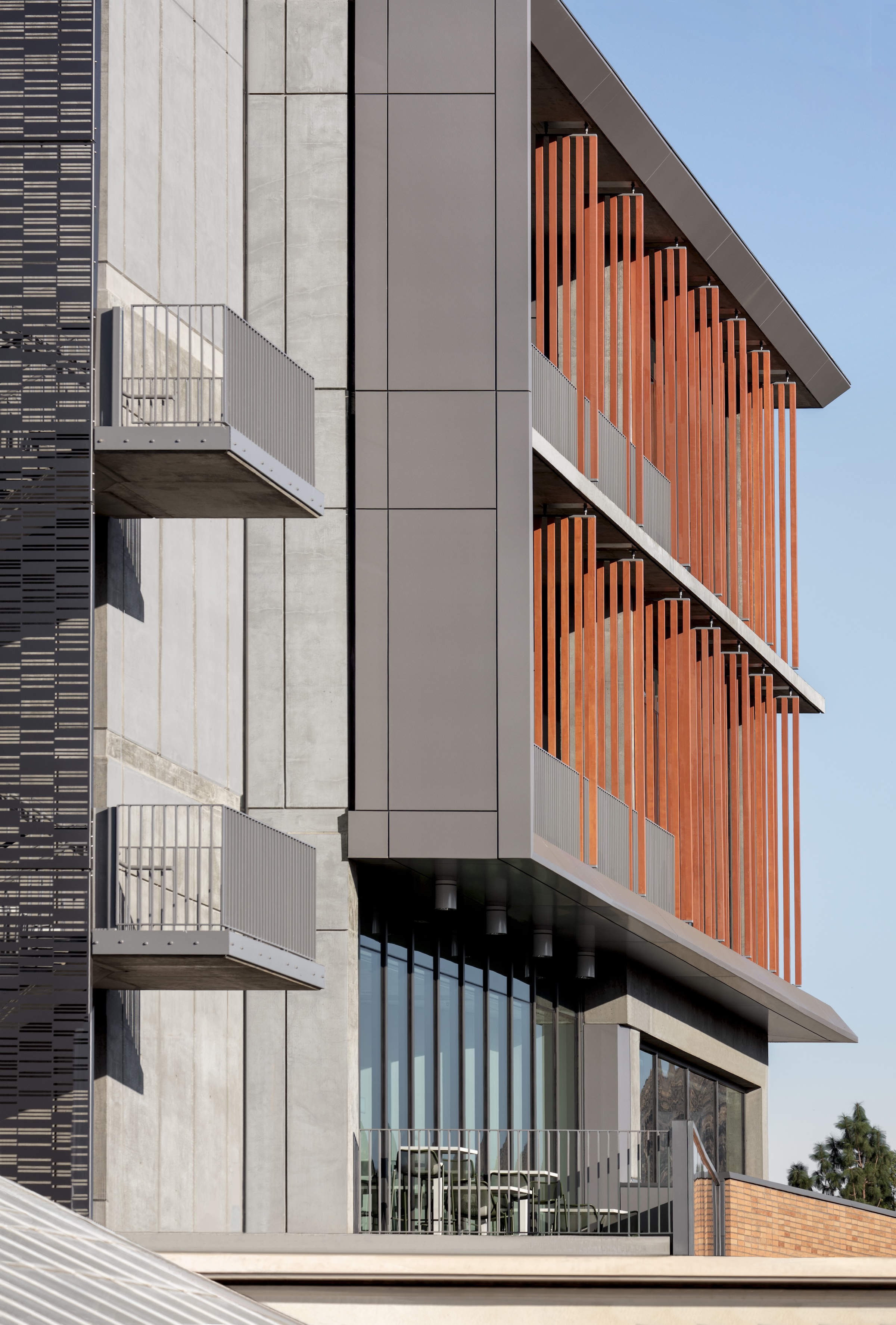

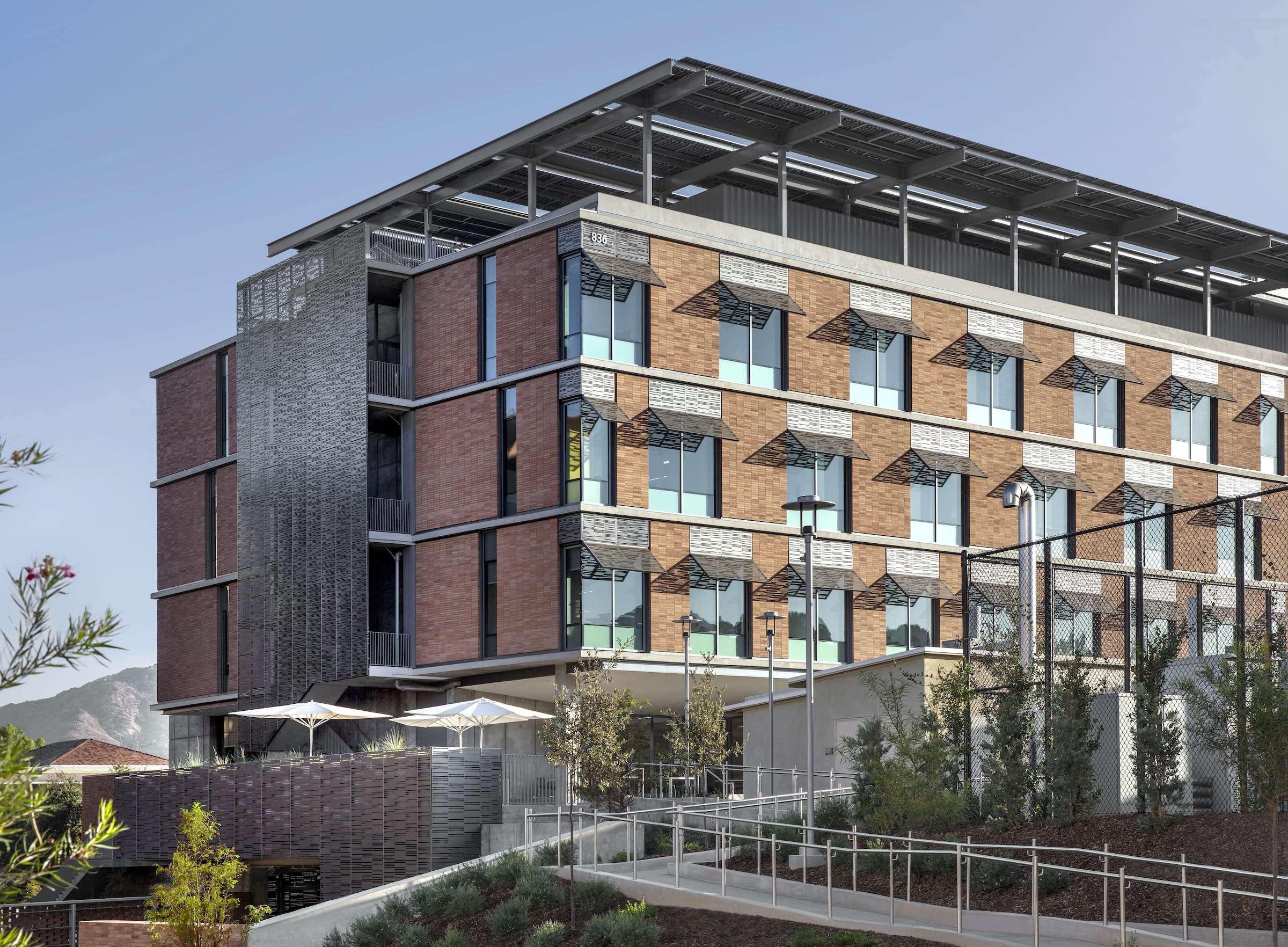

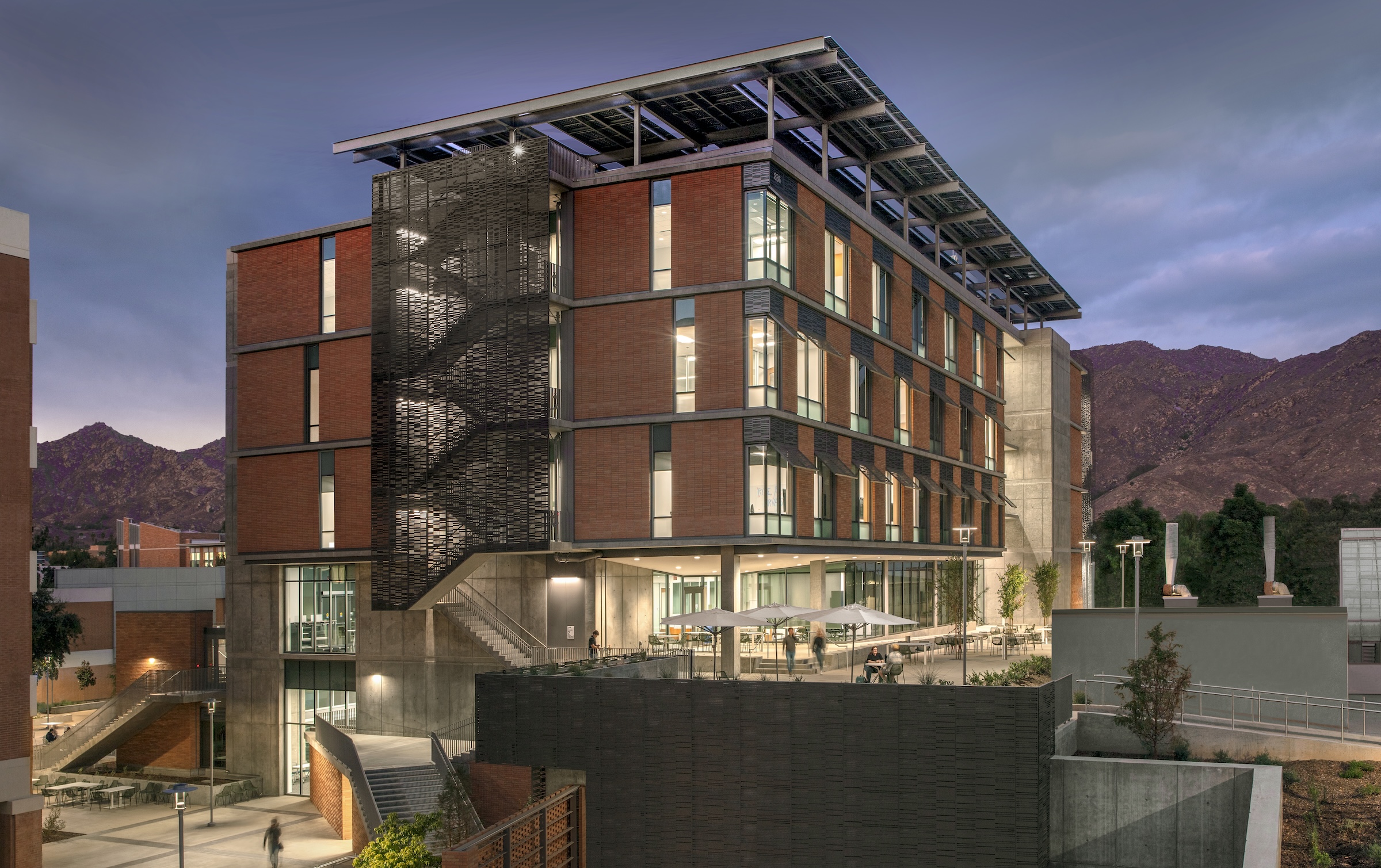
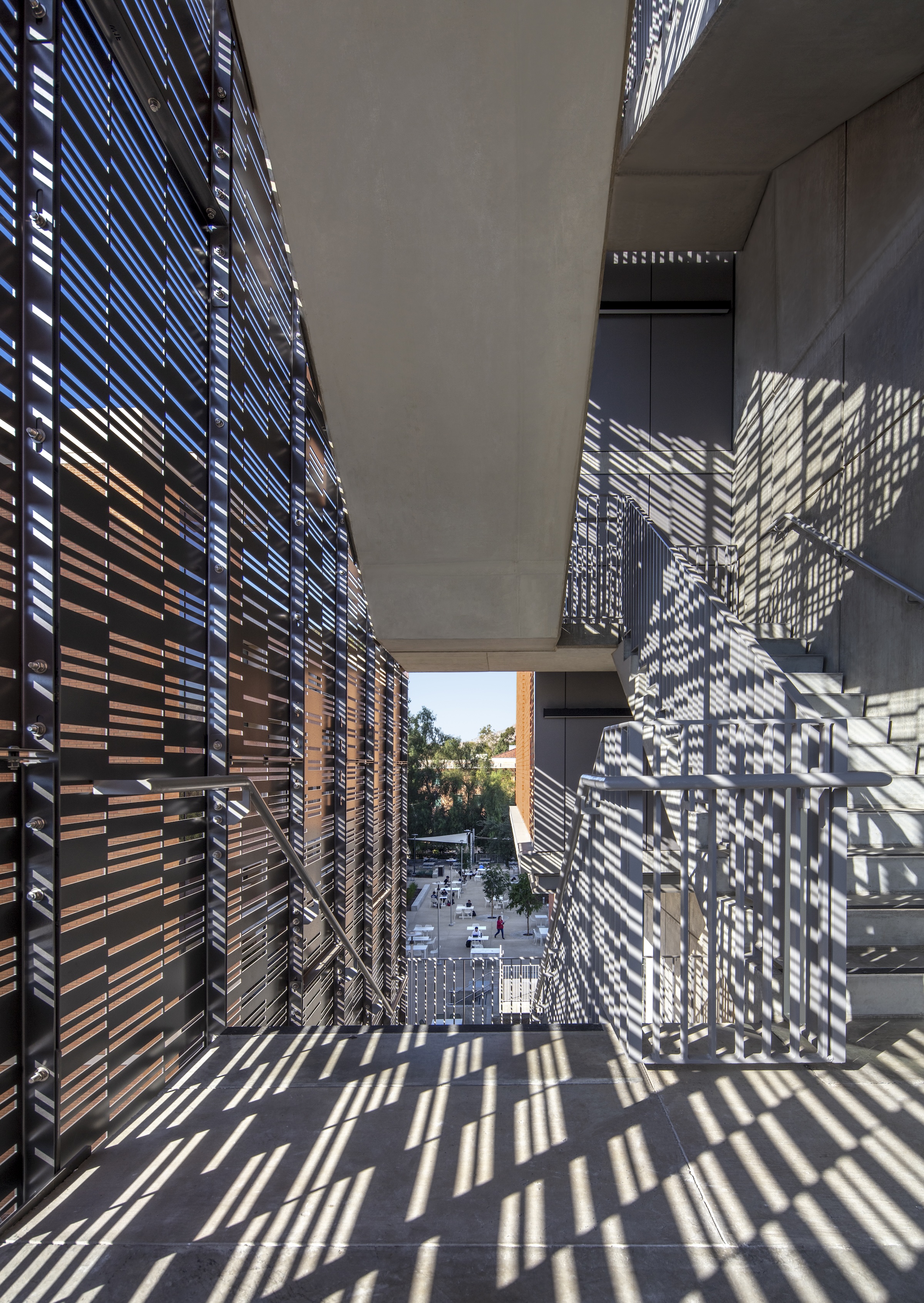
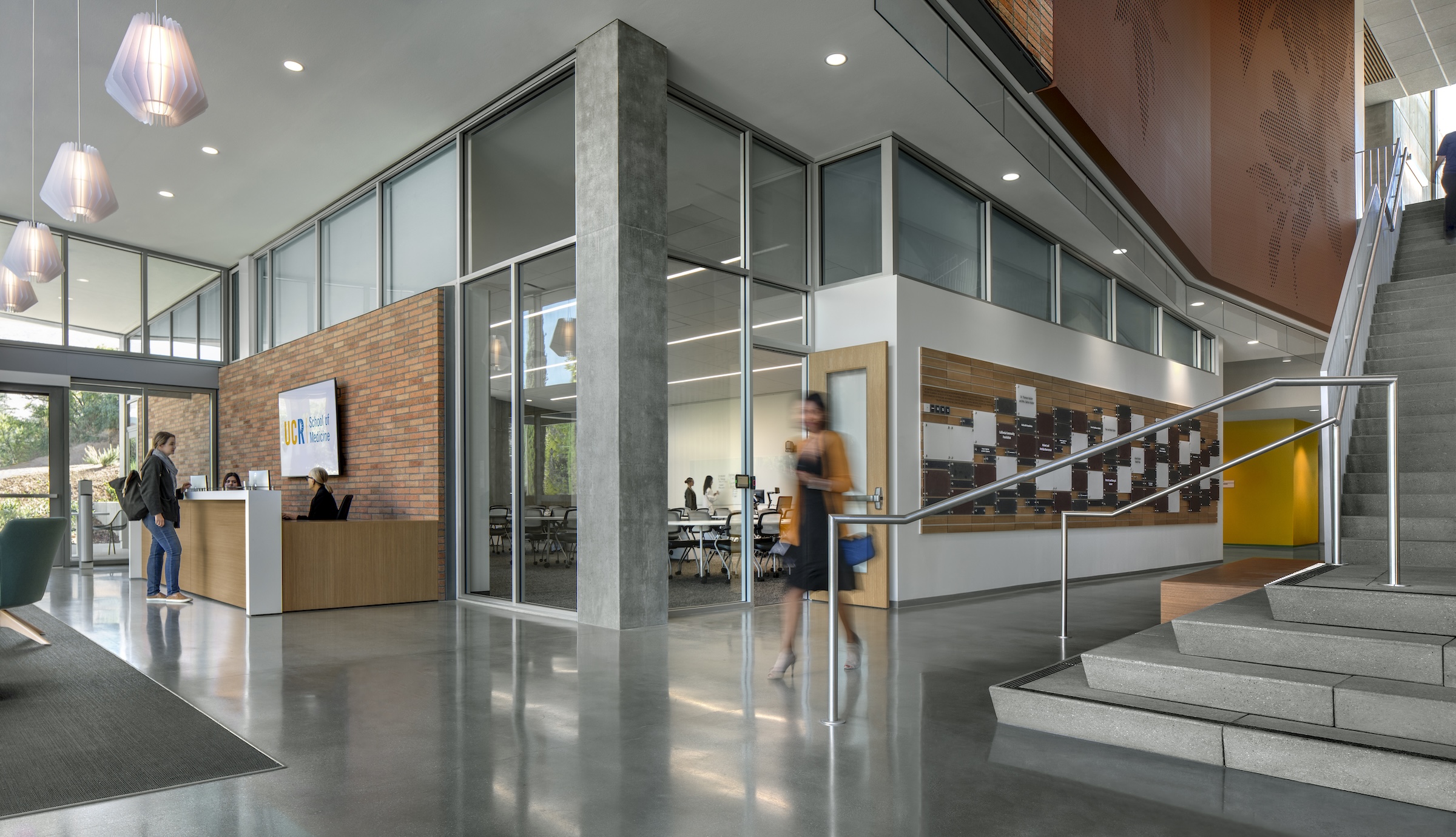

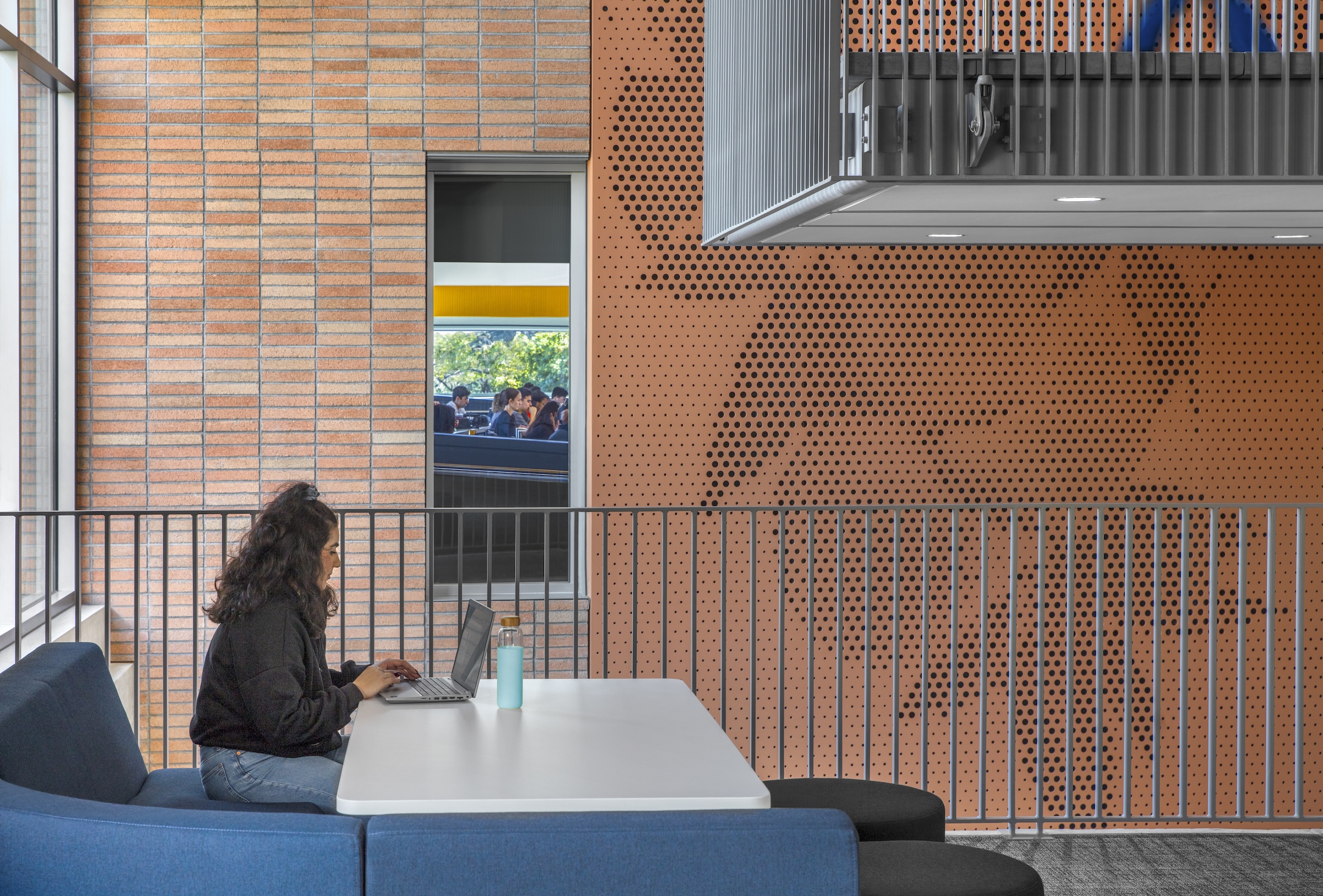
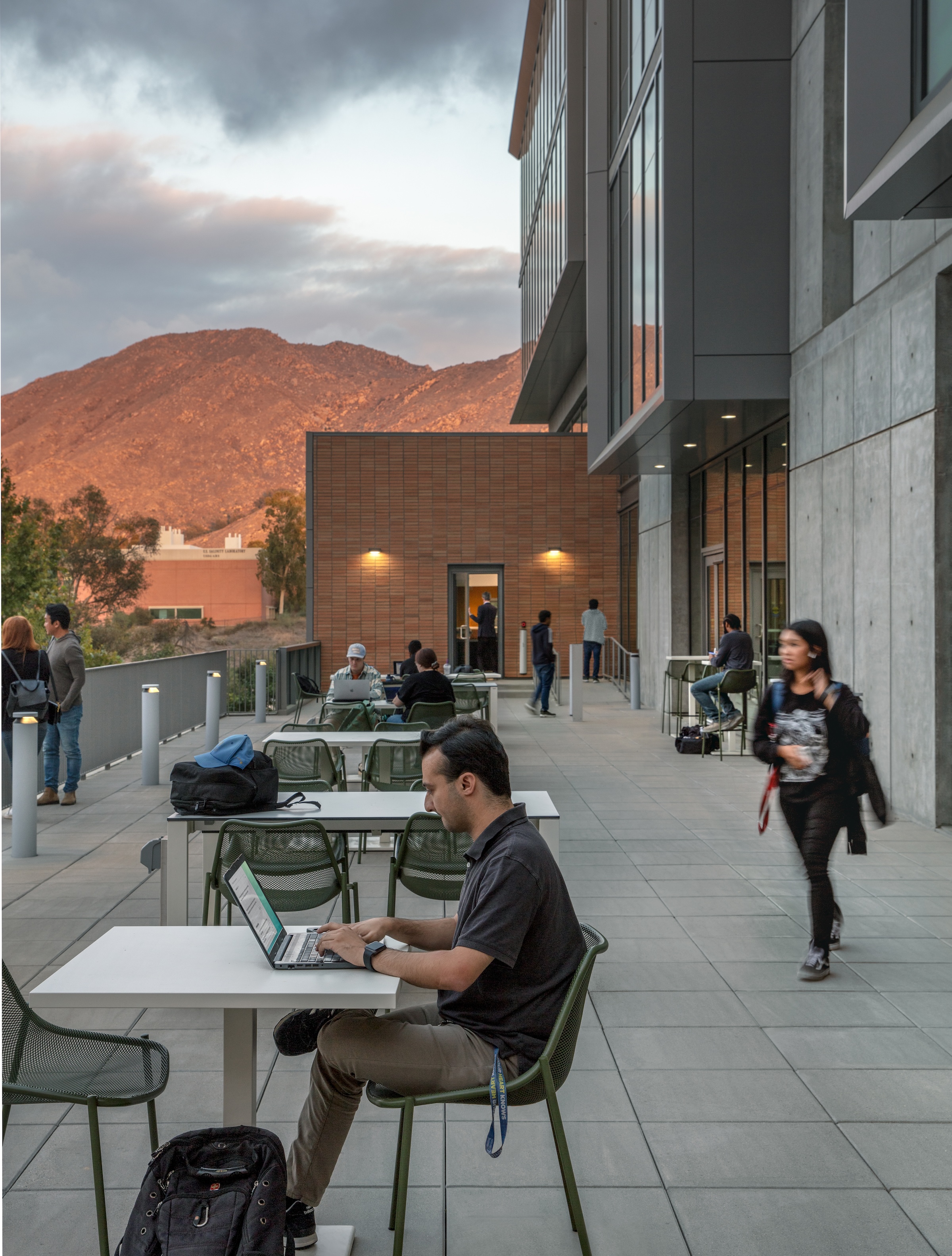
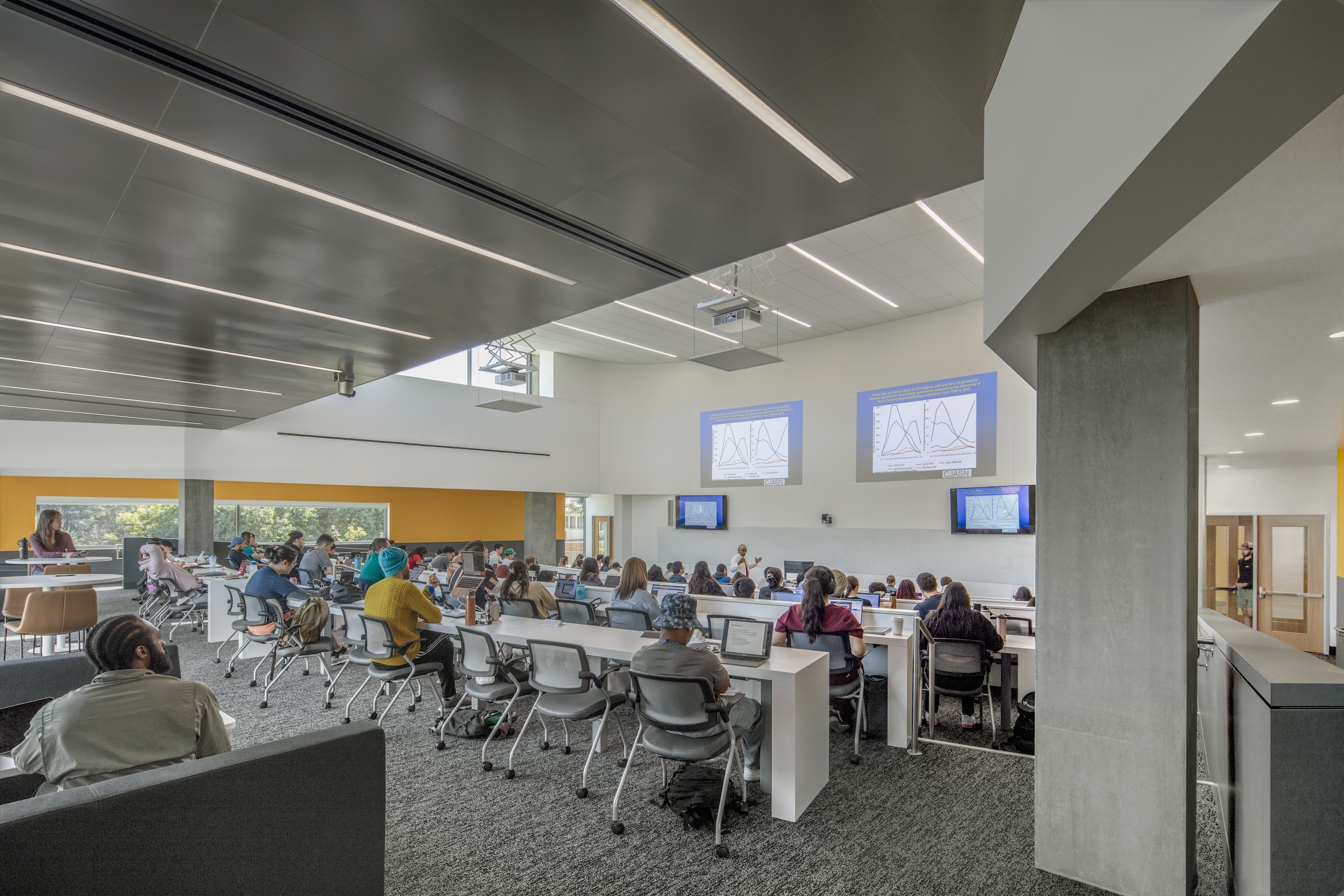

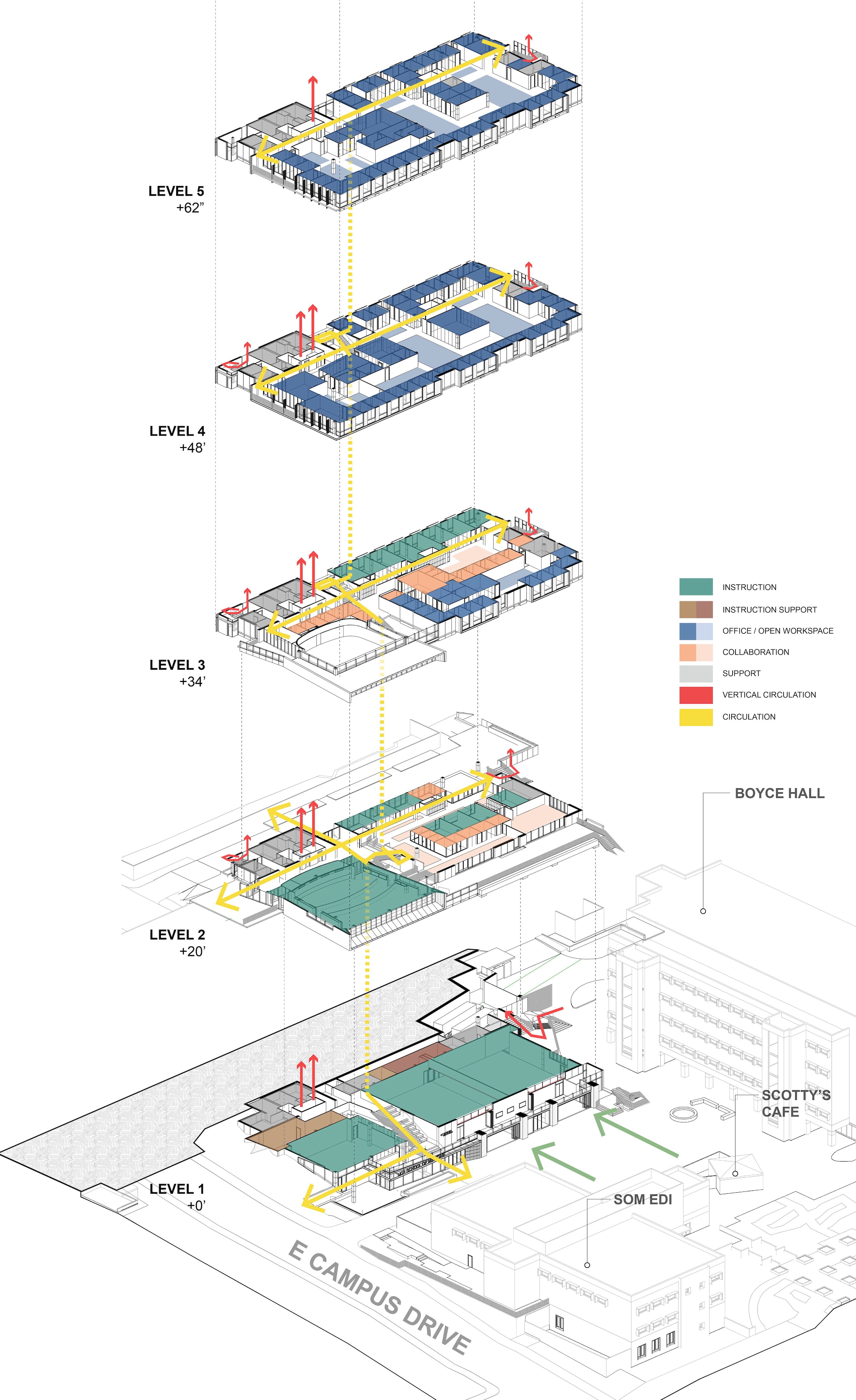
Related Stories
| Feb 23, 2011
The library is dead, long live the library
The Society for College and University Planning asked its members to voice their thoughts on the possible death of academic libraries. And many did. The good news? It's not all bad news. A summary of their members' comments appears on the SCUP blog.
| Feb 11, 2011
Sustainable features on the bill for dual-building performing arts center at Soka University of America
The $73 million Soka University of America’s new performing arts center and academic complex recently opened on the school’s Aliso Viejo, Calif., campus. McCarthy Building Companies and Zimmer Gunsul Frasca Architects collaborated on the two-building project. One is a three-story, 47,836-sf facility with a grand reception lobby, a 1,200-seat auditorium, and supports spaces. The other is a four-story, 48,974-sf facility with 11 classrooms, 29 faculty offices, a 150-seat black box theater, rehearsal/dance studio, and support spaces. The project, which has a green roof, solar panels, operable windows, and sun-shading devices, is going for LEED Silver.
| Feb 11, 2011
Research facility separates but also connects lab spaces
California State University, Northridge, consolidated its graduate and undergraduate biology and mathematics programs into one 90,000-sf research facility. Architect of record Cannon Design worked on the new Chaparral Hall, creating a four-story facility with two distinct spaces that separate research and teaching areas; these are linked by faculty offices to create collaborative spaces. The building houses wet research, teaching, and computational research labs, a 5,000-sf vivarium, classrooms, and administrative offices. A four-story outdoor lobby and plaza and an outdoor staircase provide orientation. A covered walkway links the new facility with the existing science complex. Saiful/Bouquet served as structural engineer, Bard, Rao + Athanas Consulting Engineers served as MEP, and Research Facilities Design was laboratory consultant.
| Feb 11, 2011
A feast of dining options at University of Colorado community center, but hold the buffalo stew
The University of Colorado, Boulder, cooked up something different with its new $84.4 million Center for Community building, whose 900-seat foodservice area consists of 12 micro-restaurants, each with its own food options and décor. Centerbrook Architects of Connecticut collaborated with Denver’s Davis Partnership Architects and foodservice designer Baker Group of Grand Rapids, Mich., on the 323,000-sf facility, which also includes space for a career center, international education, and counseling and psychological services. Exterior walls of rough-hewn, variegated sandstone and a terra cotta roof help the new facility blend with existing campus buildings. Target: LEED Gold.
| Feb 11, 2011
Chicago high-rise mixes condos with classrooms for Art Institute students
The Legacy at Millennium Park is a 72-story, mixed-use complex that rises high above Chicago’s Michigan Avenue. The glass tower, designed by Solomon Cordwell Buenz, is mostly residential, but also includes 41,000 sf of classroom space for the School of the Art Institute of Chicago and another 7,400 sf of retail space. The building’s 355 one-, two-, three-, and four-bedroom condominiums range from 875 sf to 9,300 sf, and there are seven levels of parking. Sky patios on the 15th, 42nd, and 60th floors give owners outdoor access and views of Lake Michigan.
| Feb 11, 2011
Apartment complex caters to University of Minnesota students
Twin Cities firm Elness Swenson Graham Architects designed the new Stadium Village Flats, in the University of Minnesota’s East Bank Campus, with students in mind. The $30 million, six-story residential/retail complex will include 120 furnished apartments with fitness rooms and lounges on each floor. More than 5,000 sf of first-floor retail space and two levels of below-ground parking will complete the complex. Opus AE Group Inc., based in Minneapolis, will provide structural engineering services.
| Feb 11, 2011
Four-story library at Salem State will hold half a million—get this—books!
Salem State University in Massachusetts broke ground on a new library and learning center in December. The new four-story library will include instructional labs, group study rooms, and a testing center. The modern, 124,000-sf design by Boston-based Shepley Bulfinch includes space for 500,000 books and study space for up to a thousand students. Sustainable features include geothermal heating and cooling, rainwater harvesting, and low-flow plumbing fixtures.
| Jan 21, 2011
Primate research facility at Duke improves life for lemurs
Dozens of lemurs have new homes in two new facilities at the Duke Lemur Center in Raleigh, N.C. The Releasable Building connects to a 69-acre fenced forest for free-ranging lemurs, while the Semi-Releasable Building is for lemurs with limited-range privileges.
| Jan 21, 2011
Nothing dinky about these residences for Golden Gophers
The Sydney Hall Student Apartments combines 125 student residences with 15,000 sf of retail space in the University of Minnesota’s historic Dinkytown neighborhood, in Minneapolis.


